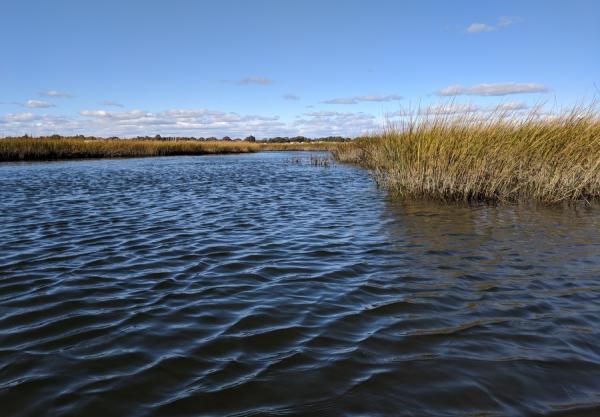
Long Island Sound, where CCNY’s Maria Tzortziou will lead a vital ecological study, covers near 1,300 miles. It stretches from the East River in Manhattan to New England.

Covering nearly 1,300 square miles, from the East River in Manhattan to New England, Long Island Sound is one of the most important estuaries in the nation with coastal communities of more than four million people. Helping protect and improve the management of this precious body of water with an asset value exceeding $700 billion is the new assignment for oceanic and atmospheric scientist Maria Tzortziou of The City College of New York’s Division of Science.
Over the next two years, Tzortziou will lead this multidisciplinary ecological project funded by the Sea Grant programs of New York (NYSG), Connecticut (CTSG), and the U.S. Environmental Protection Agency (EPA) through the Long Island Sound Study (LISS).
Tzortziou and her collaborators, Dianne Greenfield (CUNY Advanced Science Research Center) and Joaquim Goes (Columbia University/Lamont Doherty Earth Observatory), along with their group of students and postdoctoral researchers, will address the challenge of gathering and interpreting data from satellite images of Long Island Sound. Two early career CCNY postdoctoral research scientists, Brice Grunert and Guoqing Wang, and more than 10 undergraduate and graduate CUNY students will be involved in the project. The team will collect new optical, biogeochemical and ecological measurements in the Sound and will develop satellite algorithms and products for improved monitoring, assessment, and management of estuarine water quality, ecological processes, and ecosystem stressors. This includes development of algal blooms, eutrophication, and hypoxia.
Tzortziou said like many highly populated estuaries in the world, Long Island Sound (LIS) suffers from water quality problems, including high loadings of nutrients, hypoxia, and recurrent harmful algal blooms.
“Satellite observations give environmental monitors and water resource managers the ability to observe changes in water conditions across large areas not feasible with field-based monitoring alone. However, determining water composition and identifying which bloom-forming phytoplankton species are in LIS is from space has been a challenge,” she added. “This study proposes to develop new remote sensing products to improve our knowledge of LIS ecosystem parameters that are critical for management.”
Deb Szaro, acting EPA New England Regional Administrator, said the grant to the Tzortziou team and other researchers would advance ecological research that is critical to protecting and restoring Long Island Sound, one of the country’s most important estuaries.
About The City College of New York
Since 1847, The City College of New York has provided a high quality and affordable education to generations of New Yorkers in a wide variety of disciplines. CCNY embraces its role at the forefront of social change. It is ranked #1 by the Harvard-based Opportunity Insights out of 369 selective public colleges in the United States on the overall mobility index. This measure reflects both access and outcomes, representing the likelihood that a student at CCNY can move up two or more income quintiles. In addition, the Center for World University Rankings places CCNY in the top 1.2% of universities worldwide in terms of academic excellence. More than 16,000 students pursue undergraduate and graduate degrees in eight professional schools and divisions, driven by significant funded research, creativity and scholarship. CCNY is as diverse, dynamic and visionary as New York City itself. View CCNY Media Kit.
Jay Mwamba
p: 212.650.7580
e:
jmwamba@ccny.cun
%79.edu" rel="nofollow">
jmwamba@ccny.cuny.edu
View CCNY Media Kit